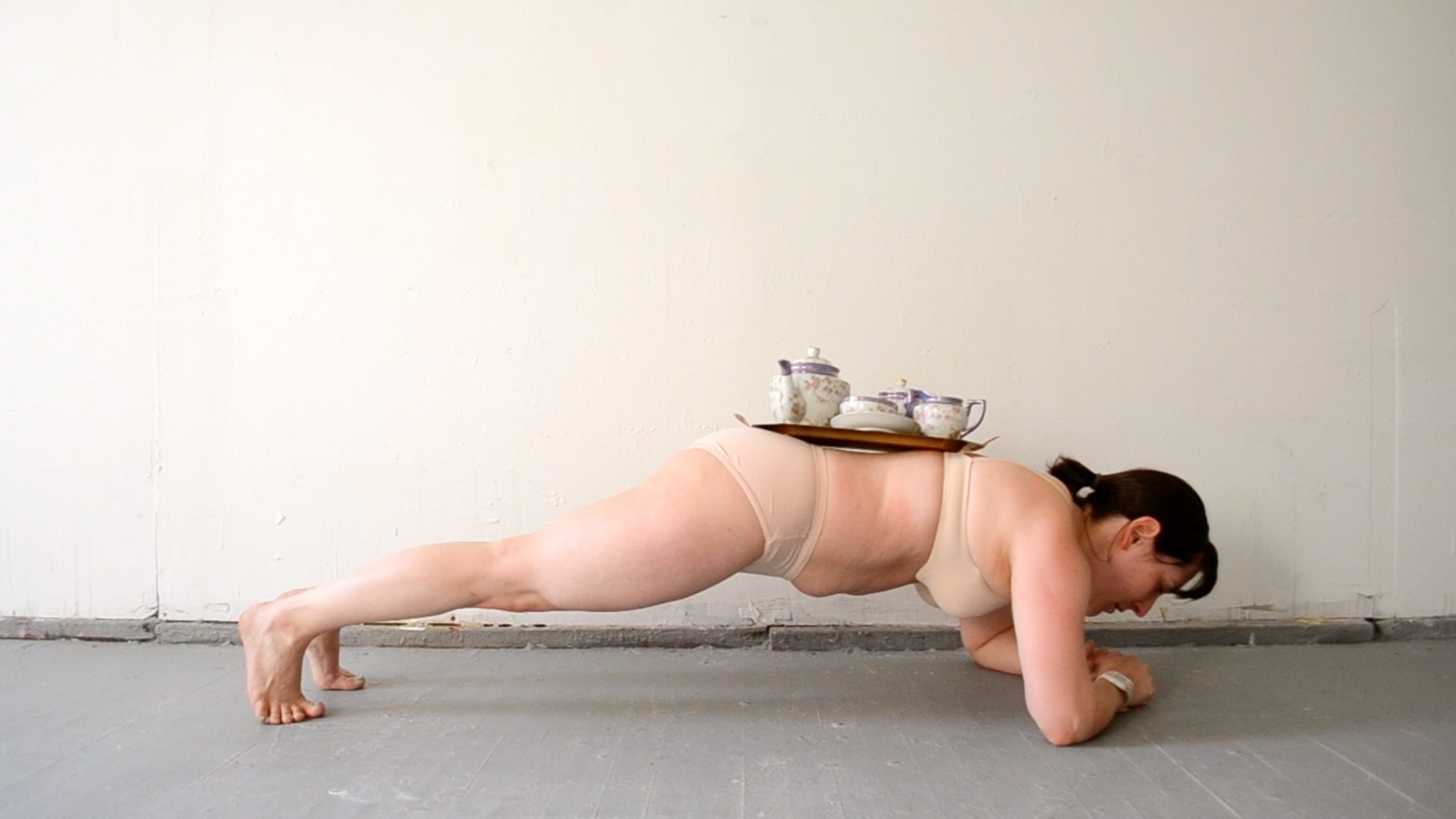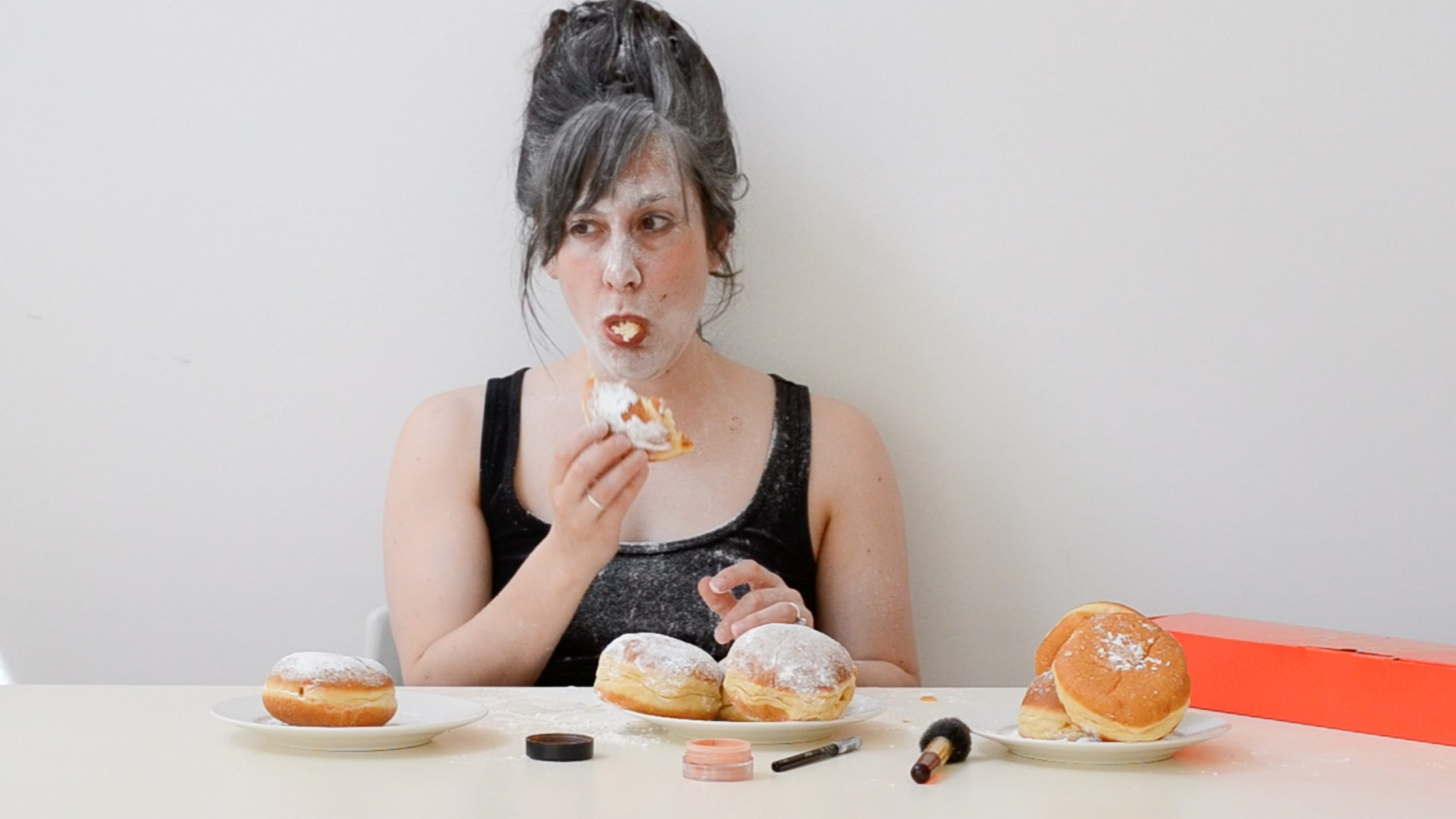

Today we’d like to introduce you to Rachelle Beaudoin.
Rachelle, please kick things off for us by telling us about yourself and your journey so far.
I grew up in Berlin, NH, a former papermill city in northern NH. I was lucky to have an excellent art teacher there, Roland Simard, and a family who supported and encouraged me to pursue art. Like most high school students, my interest was in painting, drawing and illustration. I attended the College of the Holy Cross because I wasn’t sure art school was right for me and because I was able to play ice hockey there. Athletics and hockey were and are a big part of my life and often come up in my artwork. Much of my feminism is informed by and originated from my experiences playing ice hockey as a young girl. I am glad I chose to attend a liberal arts school because it really shaped the way I approach art. I took classes in American Sign Language, sociology, statistics, and even Marine Biology, which was mostly about plankton and snail shell plasticity and not about manatees as I had hoped. Taking these courses helped me foster a strong research practice and a general intellectual curiosity. At Holy Cross, I worked in digital photo with mixed media, including handmade paper, and sculptural installation methods.
I went on to study Digital+Media with Dr. Bill Seaman at Rhode Island School of Design. At RISD I was immersed in digital media and had access to amazing facilities, visiting artists, professors and mostly importantly peers. My liberal arts background helped prepare me for the rigorous workload and thesis process but the two experiences and schools were very different. At RISD, I began to make sculptural objects that had to be worn on the body, like That Obscure Object of Desire (2007) underwear embroidered with conductive thread that administered a shock to anyone who tried to touch it. I sort of fell into performance art since someone had to wear that piece. In our department, many people were doing performance experiments and would use critique as a space for live performance, socially engaged art and sometimes for institutional critique.
One of my first performances happened because there was a fire in a building near our studios and then a mercury leak in the studios—true story—which prevented us from having a critique in front of our actual artwork. Sensing that presenting a PowerPoint of unfinished artwork wasn’t ideal and generally feeling like the situation was ridiculous, I stopped my presentation midway through to dance around and lip-sync to the Yeah Yeah Yeahs. After that, at my critiques, I did things like a cheerleading routine, I jumped out of a large cake and then ate the cake and gave a faux trade show presentation. I started to seriously study feminist art and performance art along with digital media. Since then I have worked in performance and video because I find it best communicates my ideas and I like the immediacy of the media.
Afterwards, I returned to NH and have been living and working in Peterborough, NH since 2007. Here I found a welcoming and strong arts community. I have been teaching at my alma mater, Holy Cross since 2011.
Can you give our readers some background on your art?
I primarily make videos and performance videos. I also make wearable art by altering garments and animations and I occasionally make participatory art works. I make most of these works with limited sets and props in my home and in the surrounding area in NH.
My work uses a feminist perspective to investigate issues that arise in my own life and themes or trends I see in popular culture and online. In some works, I contrast the natural world and the outdoors, to trends, themes and memes from the web, mashing up Kardashian culture with the rural, forested environment in which I live. Thighbrows, thigh gaps, and facial masks become fodder for my work. I use humor and sarcasm as an entry point into issues of gender, power and class in order to call out the invisible structures and sexism that pervades both the physical world and the online world. Fitness, food, makeup, the internet, and now motherhood, all aspects of my daily life, are recurring themes in my work. Personal, sometimes awkward, yet open and inviting, the work emphasizes the physicality of the body, showing both vulnerability and strength, following in the tradition of feminist performance art. This work comes from a place of experience and honesty. I push concepts from web videos and advertising, specifically the language of advertising and the way things are marketed and sold to women, to the absurd so that the content becomes humorous and sometimes alarming. Even as a feminist, I am susceptible to these trends, I purchase these products. I watch these videos. I want to expose this ambiguity from within.
I do this by using different strategies and, as I mentioned, different media. I often layer clothing or video as a way to hide, reveal or to create emphasis in my work. I perform athletic tasks or endurance works with my body that often result in failure. I play with cultural ideas around women’s relationship to food in my videos.
Even though I am addressing something I personally have been thinking about or dealing with I try to do so in a way that leaves space for interpretation and is relatable. Much of the work does use humor so I hope that people are at first amused but then think more about what they are seeing and why it strikes them as funny or awkward.
Do you have any advice for other artists? Any lessons you wished you learned earlier?
It’s important to seek out and foster community. You can be a part of many different communities at once. My hockey teammates, my RISD peers, my Peterborough artist neighbors and my colleagues are all so important to me and each group supports practice in a different way. I am continually inspired by my RISD friends: Carmen Montoya, Christopher Robbins and John Ewing who work collaboratively on Ghana Think Tank, my past collaborator Jeanne Jo who is a talented director and my professor Catherine D’Ignazio who is holding breast pump hack-a-thons.
When I moved to Peterborough, I emailed the artist Amy Jenkins because I had learned she lived in the town and I had been inspired by her work. She was actually in my video art textbook! She was generous, introduced me to other artists, and quickly became a friend. I encourage my students to reach out to artists in a similar way. Although a cold email or call can be awkward and the artist might not respond, it’s nice to let them know that you respect and enjoy their work. You don’t know where the conversation or relationship might go. I recently connected with the artist Megan Wynne via an introduction on Instagram and am finding our conversations about art, motherhood and everyday life really comforting and motivating.
My Peterborough artist and creative friends Amy Jenkins, Anna Von Mertens, Mary Goldthwaite-Gagne, Eric Gagne, Elin Johansson Antonelli, Michelle Aldredge and Emily Drury are very important to me. They make this small town feel much bigger. My colleagues Amy Archmbault, Cristi Rinklin, Leslie Schomp and Susan Schmidt form another supportive community for me and have helped me improve my teaching.
What’s the best way for someone to check out your work and provide support?
You can view my work on my website, http://rachellebeaudoin.com/. You can also see my work in person in the exhibition Everything Happens So Much at Kelley Stelling Contemporary in Manchester, NH (until September 14) and in the show Summa, at the Cantor Gallery at the College of the Holy Cross in Worcester, MA until October 12. You can also find me in a very large drawing in the exhibition Hauling, by Ethan Murrow, on view at the Currier Museum of Art.
I am on the board of the Glass Museum, a nonprofit arts organization in Peterborough, NH. If people want to support the arts in NH, they can visit our event, Broke: the affordable art fair this November 17th and our flagship event, The Thing in the Spring, happening in June.
Contact Info:
- Website: www.rachellebeaudoin.com
- Instagram: https://www.instagram.com/rachellebeaudoin/
- Facebook: https://www.facebook.com/rachelle.beaudoin




Image Credit:
Steven Roberge
Getting in touch: BostonVoyager is built on recommendations from the community; it’s how we uncover hidden gems, so if you know someone who deserves recognition please let us know here.
















